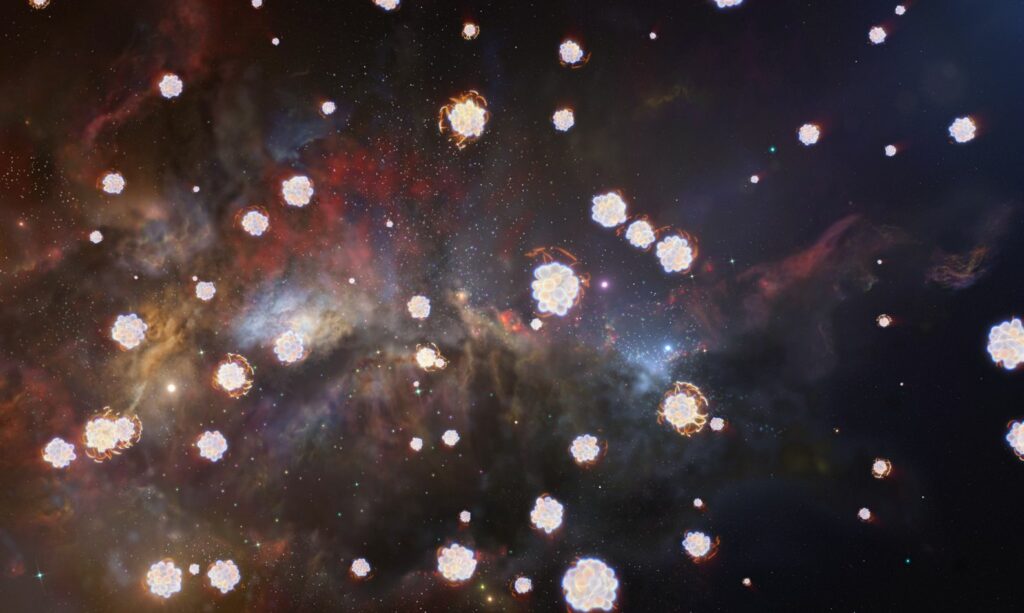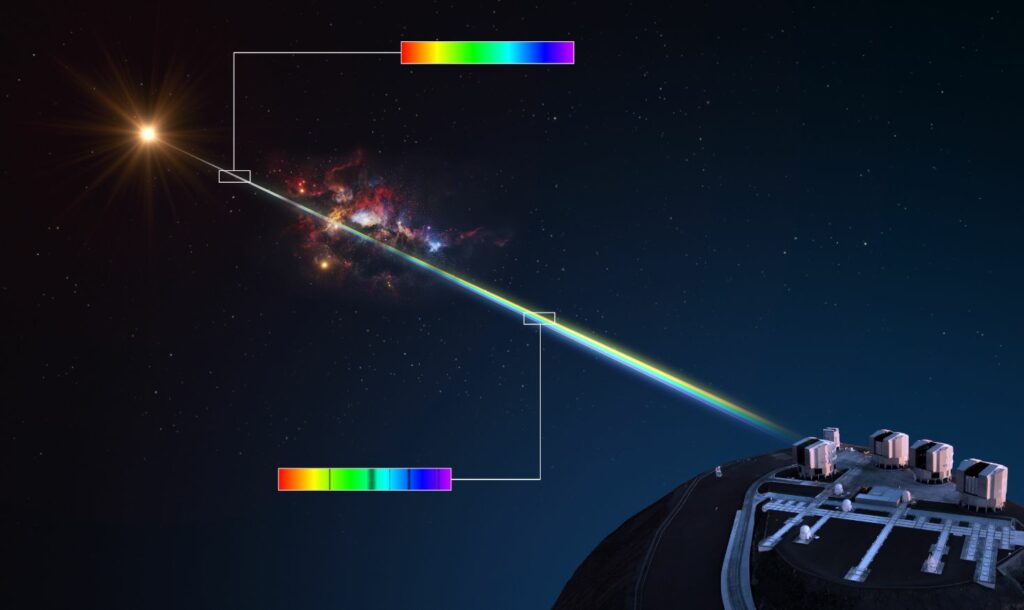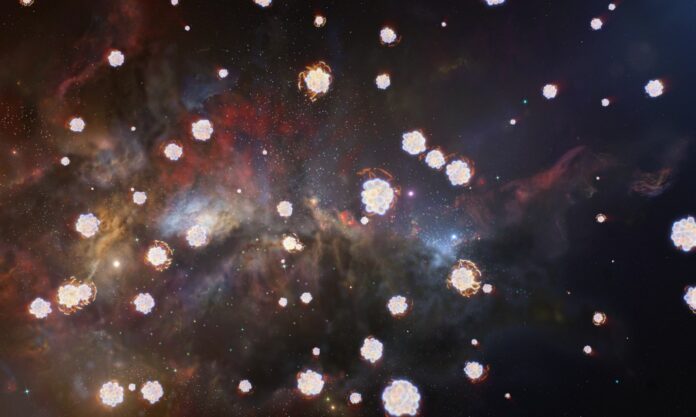Stellar Time Capsules: Ancient Gas Clouds Carry Echoes of the Universe’s Beginnings
ESO’s Very Large Telescope (VLT) has helped astronomers discover distant gas clouds that bear the remnants of the first stars to exist in the universe. Researchers have detected chemical fingerprints in the composition of three remote gas clouds, which correspond to what scientists anticipate from the explosions of the earliest stars. This discovery marks a significant step forward in comprehending the nature of the first stars that formed after the Big Bang.
“For the first time ever,” points out lead author Andrea Saccardi, “we were able to identify the chemical traces of the explosions of the first stars in very distant gas clouds.”
New research suggests that the earliest stars that emerged in the Universe differed significantly from the ones we observe today. According to experts, these stars, which formed approximately 13.5 billion years ago, contained only the most basic chemical elements, hydrogen and helium.
These first-generation stars are believed to have been significantly more massive than our Sun, perhaps tens or hundreds of times more, and they perished quickly in powerful supernovae explosions, leaving behind heavier elements that enriched the surrounding gas. This event marked the first time that heavier elements were present in the Universe.
Subsequent generations of stars formed from the enriched gas and, in turn, released heavier elements as they passed away.
However, the original first stars have long since vanished, leaving researchers with the question of how to study them.
“Primordial stars can be studied indirectly,” comments co-author Stefania Salvadori, “by detecting the chemical elements they dispersed in their environment after their death.”

The findings of the study were published today in the Astrophysical Journal.
Using data obtained from ESO’s VLT telescope in Chile, they identified three remote gas clouds that existed when the Universe was only 10-15% of its present age. Remarkably, these clouds exhibit a chemical makeup consistent with the aftermath of the explosions produced by the earliest stars. The initial supernovae, varying in mass and energy, generated diverse chemical elements like carbon, oxygen, and magnesium, which are typically found in the outer layers of stars. However, certain explosions lacked the necessary energy to disperse heavier elements such as iron, which are confined to stellar cores.
To detect traces of these low-energy supernovae, the research team focused on remote gas clouds with minimal iron content but abundant amounts of other elements. Their efforts paid off, as they identified three distant clouds in the early Universe that possessed little iron but exhibited ample carbon and other elements—clear indications of the explosions caused by the very first stars.

This peculiar chemical composition has also been seen in numerous aged stars within our own galaxy. These stars are believed to be second-generation, having formed directly from the remnants of the first stars. By uncovering these “ashes” in the early Universe, this new study provides a crucial missing piece to the puzzle of stellar evolution.
This “discovery opens new avenues to indirectly study the nature of the first stars, fully complementing studies of stars in our galaxy,” adds Salvadori.
In order to detect and examine remote gas clouds, the research team employed luminous markers called quasars. These beacons are fueled by supermassive black holes located at the cores of galaxies situated far away. As the light emitted by a quasar traverses the vast expanse of the Universe, it encounters gas clouds where various chemical elements leave discernible traces on the light.
To identify these chemical imprints, the team meticulously analyzed data from numerous quasars that were observed employing the X-shooter instrument installed on the VLT (Very Large Telescope) operated by the European Southern Observatory (ESO). The X-shooter instrument has the unique ability to split light into an extensive range of wavelengths or colors, which enables it to effectively detect a wide array of chemical elements present in these distant clouds.
This groundbreaking study paves the way for advancements in future telescopes and instruments such as ESO’s upcoming Extremely Large Telescope (ELT) and its cutting-edge high-resolution ArmazoNes high Dispersion Echelle Spectrograph (ANDES). These innovative technologies will allow for even greater exploration and understanding of the cosmos.
“With ANDES at the ELT,” adds co-author Valentina D’Odorico, “we will be able to study many of these rare gas clouds in greater detail, and we will be able to finally uncover the mysterious nature of the first stars.”
Astrophysicists Peer into the Cosmic Past: Observing the Ashes of the First Stars
Source: 10.3847/1538-4357/acc39f
Image Credit: ESO
